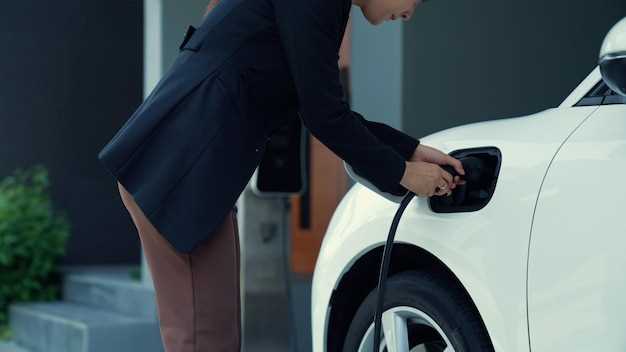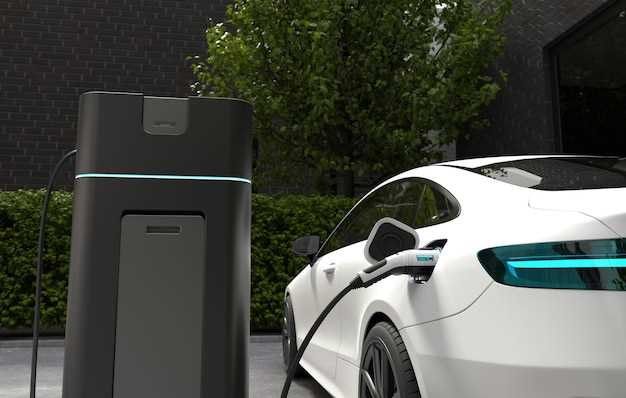
The automotive industry is witnessing a significant transformation, with hybrid and electric vehicles (EVs) leading the charge towards a more sustainable future. As environmental concerns continue to escalate, consumers are increasingly seeking alternatives to traditional gasoline-powered cars, making 2023 a pivotal year for clean transportation options.
In this article, we will explore the top hybrid and electric vehicles of the year, highlighting their key features, performance capabilities, and unique technologies. From impressive battery ranges to innovative charging solutions, these vehicles represent the forefront of automotive engineering and eco-friendly design.
As manufacturers ramp up their efforts to meet the growing demand for sustainable transportation, we will examine how advancements in technology and government incentives are shaping the market. With an array of options available, buyers can find vehicles that not only fulfill their mobility needs but also contribute to a cleaner planet.
Join us as we delve into the most noteworthy hybrid and electric vehicles of 2023, showcasing the models that stand out for their exceptional performance, efficiency, and commitment to sustainability.
Most Energy-Efficient Hybrid Vehicles of 2023
In the rapidly evolving automotive market of 2023, several hybrid vehicles stand out for their remarkable energy efficiency. These cars not only reduce fuel consumption but also decrease emissions, making them a top choice for eco-conscious drivers. Below are some of the most efficient options available this year:
-
Toyota Prius Prime
The Prius Prime remains a staple in the hybrid segment with its outstanding fuel economy. It offers:
- Estimated 133 MPGe (miles per gallon equivalent) in electric-only mode.
- Combined fuel efficiency of 54 MPG when operating as a traditional hybrid.
- Excellent electric-only range of up to 25 miles.
-
Honda Insight
The Insight combines sleek design with efficient performance:
- Estimated 55 MPG in the city and 49 MPG on the highway.
- Consistently delivers a smooth and responsive drive.
- Powerful hybrid powertrain that balances performance and efficiency.
-
Hyundai Ioniq Hybrid
The Ioniq Hybrid is celebrated for its innovative technology:
- Impressive fuel economy with an EPA rating of 58 MPG combined.
- Eco-friendly materials throughout the interior.
- Advanced safety features included as standard.
-
Kia Niro Hybrid
The Niro offers versatility and efficiency:
- Rated at 53 MPG city and 48 MPG highway.
- Compact SUV design allows for ample cargo space.
- Generous list of tech and safety features enhances driving experience.
-
Ford Escape Hybrid
This compact SUV offers a robust hybrid option:
- EPA fuel economy ratings of 44 MPG in the city and 37 MPG on the highway.
- Available all-wheel drive for enhanced traction.
- Spacious interior and user-friendly technology.
These vehicles exemplify the advancements in hybrid technology, showcasing a balance of efficiency, performance, and environmental responsibility. As consumers continue to seek more sustainable transport options, these models remain at the forefront of the hybrid vehicle market.
Best All-Electric Cars for Urban Commuting

As urban areas continue to expand, the demand for efficient and environmentally friendly transportation options rises. All-electric vehicles (EVs) are becoming a popular choice for city dwellers, thanks to their low emissions, quiet operation, and reduced running costs. Here are some of the best all-electric cars that excel in urban commuting for 2023.
The Tesla Model 3 remains a top contender with its impressive range, rapid charging capability, and advanced technology. Its compact size makes it easy to maneuver through crowded streets, while the spacious interior provides comfort for both drivers and passengers. The onboard Autopilot feature adds convenience during stop-and-go traffic situations.
Another excellent choice is the Chevrolet Bolt EV, known for its affordability and practicality. With a respectable range of over 250 miles on a full charge, it easily covers most daily commutes. The Bolt’s compact dimensions and large cargo space further enhance its urban usability, making it an ideal option for city life.
The Nissan Leaf continues to be a staple in the electric vehicle market. Its smaller footprint and nimble handling make it suitable for navigating tight parking spaces. The Leaf features a user-friendly infotainment system and offers two battery options to cater to varying commuting needs, ensuring both efficiency and convenience.
For those seeking luxury in their urban drive, the BMW i4 offers an impressive blend of performance and comfort. This sleek sedan not only provides an exhilarating driving experience but also boasts cutting-edge technology and spacious interiors. The i4’s electric powertrain is designed to deliver quick acceleration, making it a thrilling option for city driving.
Lastly, the Hyundai Kona Electric stands out with its compact SUV design. It offers ample storage space, high driving position, and a generous range, making it suitable for both city and suburban environments. Its high-tech features and safety ratings provide added peace of mind for drivers navigating urban areas.
In conclusion, urban commuting benefits significantly from the advantages offered by all-electric cars. With various options available, individuals can select a model that aligns with their lifestyle, needs, and preferences, contributing to a greener and more enjoyable city experience.
Features That Enhance Electric Vehicle Safety in 2023
As the electric vehicle (EV) market continues to evolve, manufacturers are increasingly integrating advanced safety features to enhance driver and passenger protection. In 2023, several key technologies and systems stand out, making EVs safer than ever.
One of the most notable features is the advanced driver assistance systems (ADAS), which include functionalities such as adaptive cruise control, lane-keeping assist, and automatic emergency braking. These systems utilize sensors and cameras to monitor the vehicle’s surroundings, significantly reducing the likelihood of collisions and ensuring a safer driving experience.
Another critical enhancement is the implementation of enhanced battery safety measures. Modern electric vehicles are equipped with sophisticated thermal management systems that help prevent battery overheating. Additionally, many EVs feature robust battery enclosures designed to protect against punctures and impacts, minimizing the risk of fire and ensuring passenger safety in the event of an accident.
Moreover, pedestrian detection technology has become increasingly prevalent. This feature uses cameras and radar to identify pedestrians in the vehicle’s path, alerting the driver or automatically applying the brakes to prevent potential accidents. This is particularly vital in urban environments where foot traffic is dense.
Furthermore, the integration of 360-degree cameras and parking assist technologies enhances maneuverability and visibility, allowing drivers to navigate tight spaces and avoid obstacles more easily. These features not only improve parking safety but also reduce the chances of minor accidents during low-speed maneuvers.
Another important aspect is the development of vehicle-to-everything (V2X) communication technology. V2X enables vehicles to communicate with each other and infrastructure, allowing for real-time data exchange that can improve situational awareness and enhance safety. This technology can alert drivers to upcoming hazards or traffic conditions, contributing to a safer driving experience.
Lastly, improved structural integrity and crash safety ratings are pivotal in enhancing overall vehicle safety. Manufacturers are increasingly employing high-strength materials and innovative designs to ensure that vehicles can withstand impacts better, thus enhancing passenger protection during collisions.
In summary, the amalgamation of advanced driver assistance technologies, enhanced battery safety, pedestrian detection systems, comprehensive camera setups, V2X communication, and robust structural designs collectively contribute to making electric vehicles significantly safer in 2023.
Comparison of Charging Options for Electric Cars Available This Year
As the popularity of electric vehicles (EVs) continues to rise, understanding the different charging options is essential for potential buyers. This year, there are several charging methodologies available, each with unique advantages and disadvantages. Below is a comparison of the most common charging options for electric cars in 2023.
| Charging Option | Charging Speed | Typical Usage | Installation Requirements |
|---|---|---|---|
| Level 1 Charging | 2-5 miles of range per hour | Home charging for overnight use | Standard household outlet (120V) |
| Level 2 Charging | 10-60 miles of range per hour | Home, public charging stations | 240V outlet; may require professional installation |
| DC Fast Charging | 100-400 miles of range in 30 minutes | Highway travel, road trips | Specialized equipment; typically found at dedicated charging stations |
| Wireless Charging | Varies; generally slower than wired options | Convenience charging at designated pads | Specialized infrastructure and vehicle compatibility required |
Level 1 and Level 2 charging are the most common residential options, with Level 2 providing a faster charge, suitable for daily use. DC Fast Charging is ideal for long-distance travel, allowing EV owners to quickly recharge their vehicles during trips. Wireless charging, though still in development, offers convenience but may not be widely available yet.
In conclusion, selecting the appropriate charging option depends on lifestyle, driving habits, and availability of charging infrastructure. Understanding these differences will aid consumers in making informed decisions when purchasing an electric vehicle.
Affordability and Financial Incentives for Hybrid Vehicle Buyers
Affordability is a key concern for many consumers considering hybrid vehicles. The initial purchase cost of hybrid models can be higher than their conventional gasoline counterparts, primarily due to the advanced technology involved. However, several financial incentives can help offset these costs, making hybrids more accessible to a broader audience.
Many governments offer tax credits and rebates for hybrid vehicle purchases. In the United States, federal tax credits can reduce the cost by several thousand dollars, depending on the model and its battery capacity. Additionally, various states have their own incentives, which may include additional tax credits, rebates, or exemptions on sales tax, thereby enhancing the affordability of hybrids.
Moreover, buyers of hybrid vehicles often benefit from reduced fuel costs. Hybrids generally achieve better fuel economy compared to traditional cars, leading to significant savings at the gas pump over time. The lower operating costs can make hybrid ownership more financially viable in the long run.
Insurance costs for hybrids can also be lower than for conventional vehicles, as many insurers recognize the reduced risk associated with hybrids. This further contributes to overall savings for buyers. Additionally, some regions offer lower registration fees for hybrid vehicles as part of their incentive programs.
Financing options for hybrid vehicles are becoming increasingly attractive. Auto manufacturers often provide low-interest financing or special lease deals, making monthly payments more manageable. These financial offerings can make purchasing a hybrid less daunting for budget-conscious consumers.
Finally, the residual value of hybrid vehicles tends to remain stable, ensuring that owners can sell or trade in their vehicles for a good price later. This aspect further enhances the overall affordability and makes hybrids a smart investment for prospective buyers.
Innovative Technology Trends in 2023 Hybrid and Electric Models
2023 marks a significant year for hybrid and electric vehicles, showcasing innovative technologies that enhance efficiency, performance, and user experience. One of the most notable trends is the integration of advanced battery technologies. Manufacturers are increasingly adopting solid-state batteries, which offer higher energy density, faster charging times, and improved safety compared to traditional lithium-ion batteries.
Vehicle-to-Grid (V2G) technology is also gaining traction in 2023. This allows electric vehicles to return energy to the grid, providing a sustainable way to manage energy consumption. Through V2G systems, EV owners can not only charge their vehicles during off-peak hours but also sell excess energy back to the grid during peak demand, creating a profitable cycle of energy consumption.
Another significant advancement lies in autonomous driving features. Enhanced driver assistance systems are becoming standard, with features like automatic lane-keeping, adaptive cruise control, and improved parking assistance. These systems rely on sophisticated sensors and AI algorithms to analyze surroundings, significantly elevating safety and convenience.
In the realm of infotainment systems, 2023 vehicles are equipped with more intuitive interfaces that integrate with smartphones seamlessly. Touchscreen displays are larger and more responsive, featuring advanced voice recognition technologies and AI-driven personal assistants that improve overall accessibility and connectivity.
Lastly, manufacturers are emphasizing sustainability by utilizing recycled and eco-friendly materials in vehicle interiors. This initiative extends beyond the powertrain to include the cabin, with innovative uses of materials such as recycled plastics, bio-based composites, and sustainable leathers, catering to environmentally conscious consumers.
